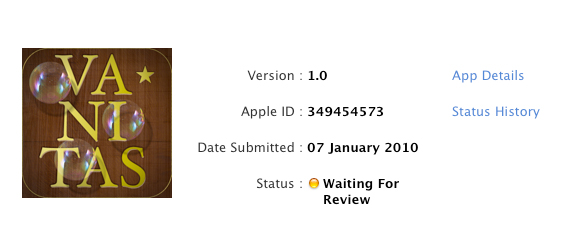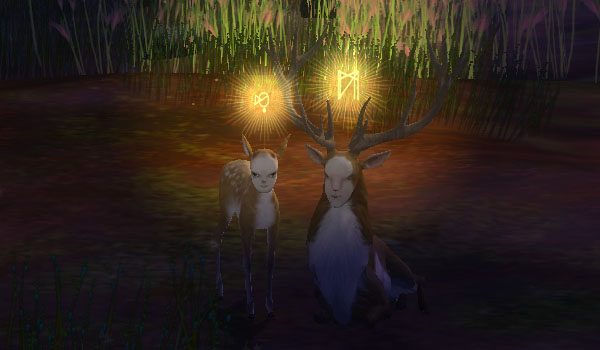1. More Independence
2. Less games
The start of a new decade feels like an appropriate time to get ambitious. Out with the old, in with the new! Not that there’s going to be any extreme changes around here. My resolutions mostly concern a change in attitude, in philosophy. But, with any luck, they will take us further. And in the right direction.
While these resolutions have been bubbling up for a while, two things were direct triggers: Auriea’s realisation that her favourite games of the decade are all over 5 years old and our recent visit to the Belgian incarnation of the historical Game On exhibition where it became very clear how much more fun the old arcade games are than the new pseudo-narrative shiny next gen titles upon which I had based a lot of my hopes.
Independence!
We don’t want to make obscure art. This is a big part of the reason why we choose to work with digital media. We don’t even want to make art per se. We just want to share beautiful moments and elegant thoughts with people who are open to them. And perhaps, in our most audacious daydreams, we’d hope to make a small contribution to a more harmonious world.
Accessibility is one of the reasons why we don’t shy away from commerce. Commerce is an efficient way to distribute things in a capitalist system. And thanks to the abundance of the digital, we can sell our work very cheaply. But commerce also has a way of confusing an artist, of holding you back. Commerce forces you to think about seduction -even when it’s not appropriate- and to favour projects with commercial potential over others that might be more relevant artistically. We like our work to be accessible. But we want that to be an artistic choice and not an economic requirement.
We’re not very good at commerce anyway. We don’t have clever business minds. And our work is just a bit too far away from the ordinary to appeal to people who do. But above all, thinking about commerce -however exciting it may sometimes be- always ends in bogging us down, to slowing us down, to depressing us.
I want us to become less dependent. Less dependent on money, less dependent on success, less dependent on quantity. And focus exclusively on quality. This includes improving the accessibility of our work! While commercial pressure may motivate one to lower the threshold of their productions, it only does so towards a specific target audience, effectively locking everyone else out. It would be possible to optimize our work to be very accessible for hardcore gamers. But at the expensive of other people we might also want to communicate with. We want our work to be more widely accessible. We don’t want to depend on any specific niche.
None of this leads to any radical decisions. This is just a resolution that can guide us when making future decisions. As of now, I want to focus on self-sufficiency. And favour non-profit or break-even operations over commercial ones. Or even figure out ways to make losing money bearable. It’s ok if that means working on smaller projects. As long as they are “big on the inside”.
Games over
This year, I’m going to care less about games. And as a result, I will probably enjoy them more.
I give up.
I give up on my hopes for videogames to become a valid cultural medium.
I’ve been fighting very hard. I’ve been putting my money where my mouth is. For several years already. Almost a decade.
But the games industry is merrily traveling in the opposite direction. Videogames are not changing anymore. They seem to have lost that capacity. Sure, the technology still evolves, so everything gets more shiny. But this is not leading to any sort of evolution, let alone the required revolution. The desire is simply not there.
Because videogames are happy just as they are. The videogame culture is extremely pleased with itself. A few years ago, people were still complaining about “sequelitis”. No everybody merrily plays Hip Shootgame #13 and Cool Jumpgame #26, with no objections. On the contrary! Everybody gets very solemn and deep when yet another war simulator hits the shelves. Only to forget it within the first week of release.
Gamers, publishers, journalists are all very happy! Who am I to spoil their fun? If they feel comfortable in a juvenile ghetto that is irrelevant to culture, good for them. I’m out of here.
Maybe this is another incarnation of my desire for independence: I want to be independent from the games industry. And from the games format.
Games are fun. Let them be fun. And let’s do something else, when we want to be serious. Let’s focus on interactive entertainment that is not games (let’s call them “notgames” for now  ). With a technology that is so versatile and powerful, why should we limit our productions and enjoyment to the single format of games, a format that has been around for centuries and doesn’t even need computers to exist?
). With a technology that is so versatile and powerful, why should we limit our productions and enjoyment to the single format of games, a format that has been around for centuries and doesn’t even need computers to exist?
I realize that it has always been our mission at Tale of Tales to explore the potential of the interactive medium. But so far, this has happened in some form of conflict with videogames, based on our misguided belief that videogames had potential to grow, to grow into a medium (which, believe it our not, still seemed possible only 5 years ago). Simply letting go of the connection, will make our job a lot easier as it will help us explore with far less constraints. Leaving behind the idea that we’re making a game, opens up a world of creative possibilities!
Notgames
But more than that, I want to stimulate research and development of notgames. Instead of continuously having senseless arguments with game fans, developers and theorists, I want to gather together the brightest ideas concerning non-game interactive entertainment. Without the noise and the distractions. Maybe we’ll start a blog about the subject, with news, essays, opinion pieces, debates. A place where ideas can be explored and shared and discussed. I would also like to commission designers and artists to make new non-game interactive projects. Maybe there can be a competition like those ubiquitous game making competitions, but about making interactive entertainment that is not games -far more exciting and certainly a much larger area to explore. And finally, I’m looking into the possibility of starting a sort of label -like a record label- to publish and distribute notgames.
If you would like to contribute to any of this, please post a comment or send email.
Happy New Year! 



 The symbols are made up of a limited range of elements that are combined to form pictograms. Players can choose a pictogram for their deer when they register for the game. when they login, this pictogram appears above the head of the deer avatar (in a reference to the legend of Saint Hubert, who was converted to Christianity after encountering a deer with a crucifix between its antlers).
The symbols are made up of a limited range of elements that are combined to form pictograms. Players can choose a pictogram for their deer when they register for the game. when they login, this pictogram appears above the head of the deer avatar (in a reference to the legend of Saint Hubert, who was converted to Christianity after encountering a deer with a crucifix between its antlers).